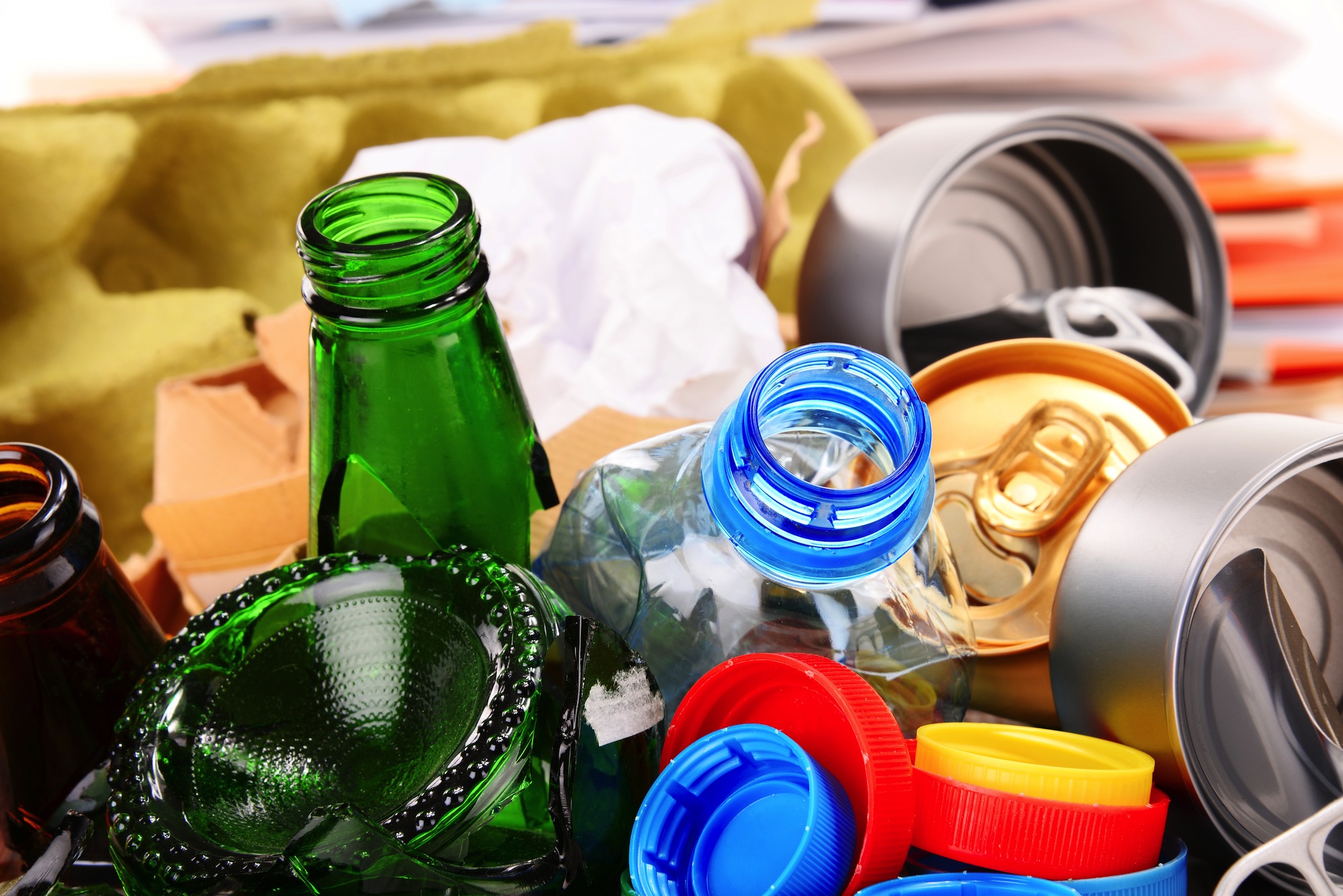Former New York Times op-ed columnist John Tierney took to the front page of the Times’ Sunday Review this week to decry “The Reign of Recycling.” The article has, naturally, drawn praise from libertarian and conservative outlets such as Reason magazine and the American Enterprise Institute.
Tierney selectively and dishonestly presents evidence to argue that mandatory recycling programs cost more than they are worth. He writes as if he were just a dispassionate arbiter of common sense, but his analysis is laden with questionable value judgments. His case is at best ideological, at worst nonsensical.
Here are five of his most misleading arguments:
1.
The environmental benefits of recycling come chiefly from reducing the need to manufacture new products — less mining, drilling, and logging. But that’s not so appealing to the workers in those industries and to the communities that have accepted the environmental trade-offs that come with those jobs.
If you are a conservative ideologue then this might sound compelling. If, on the other hand, you’re a person who cares about clean air and water, it should not. How does Tierney know that everyone in areas with mining, drilling, and logging is happy to live near those polluting industries? Tierney just assumes the community “accepted the environmental trade-offs” wherever natural resource extraction occurs. In many places, your neighbor may be free under the law to lease all sorts of mining, drilling, or logging without your permission. All those activities are known for releasing noxious and toxic byproducts, a fact Tierney neglects to mention, even as he later expounds on the nasty smells emanating from food composting plants. Has Tierney ever lived next door to a lumber mill or a mineral mine? Has he interviewed anyone who does? How would he actually feel if one of those charming neighbors moved in next door?
However a mineral mine’s neighbors might feel, the adverse impacts of extracting natural resources aren’t limited to the surrounding community. Water pollution, for example, can extend far and wide. According to the Environmental Protection Agency, “Throughout the western United States there are thousands of miles of mining impacted streams and rivers caused by active and historic mining of metallic ores (e.g., iron, copper, lead, zinc, molybdenum, tungsten) and precious metals (gold, platinum, and silver).”
As for jobs, it’s not even clear that Tierney’s assumption that recycling causes a reduction in upstream jobs is correct or relevant. Yes, there may be fewer jobs for loggers to produce paper. But paper plants that use recycled paper because it’s cheaper than making it from more trees are also employing people. Without access to that cheaper supply, they might not be in business.
“There have always been workers and industries that rely on recycling as a raw material,” notes Chaz Miller, director of policy and advocacy for the National Waste and Recycling Association. “The paper industry has long depended on recycled pulp.” (NWRA’s members are the private companies that pick up trash and recycling from commercial clients and homes in suburban and rural communities where trash pickup is outsourced through private contracts.)
2.
Recycling municipal solid waste in the United States saves the equivalent of 186 million metric tons of carbon dioxide, comparable to removing the emissions of 39 million cars. According to the EPA’s estimates, virtually all the greenhouse benefits — more than 90 percent — come from just a few materials: paper, cardboard, and metals like the aluminum in soda cans … Once you exclude paper products and metals, the total annual savings in the United States from recycling everything else in municipal trash — plastics, glass, food, yard trimmings, textiles, rubber, leather — is only two-tenths of 1 percent of America’s carbon footprint.
Likewise, once you exclude all the environment, cities, justice, and food coverage, Grist hardly runs any articles. But that wouldn’t make any sense, just as it makes no sense to exclude paper and metals from a discussion of recycling’s carbon benefits. So what’s Tierney’s point? That recycling rubber and leather doesn’t save a lot of CO2? OK, so throw away your used gloves guilt-free. That might be important if mandatory leather recycling were widespread, which it isn’t.
If Tierney has a remotely valuable insight here, it’s that the more commonly required recycling of plastic and glass doesn’t have a great net carbon benefit, especially if you’re using hot water to wash out plastic and glass containers before recycling them. The world would benefit from a comprehensive, unbiased examination of the ecological merits of mandatory plastic and glass recycling, but unfortunately that’s not what we have here.
3.
One of the original goals of the recycling movement was to avert a supposed crisis because there was no room left in the nation’s landfills. But that media-inspired fear was never realistic in a country with so much open space.
Whatever the original goals of recycling were, lack of room in landfills is not the main or even secondary ecological justification for recycling now. Recycling benefits the environment because it reduces the need for natural resource extraction and energy-intensive conversion of those resources into usable commodities such as paper, metal, glass, and plastic.
Still, for what it’s worth, Tierney’s point about the country’s ample space for landfills is overly simplistic. Yes, out in the Great Plains there is plenty of room. Here in New York City, there is not. And if we are to get our trash from here to there, we must ship it at great financial and ecological cost. This is a factor Tierney ignores, even as he complains about the greater number of trucks required by recycling programs.
4.
Composting facilities around the country have inspired complaints about nauseating odors, swarming rats, and defecating sea gulls. After New York City started sending food waste to be composted in Delaware, the unhappy neighbors of the composting plant successfully campaigned to shut it down last year.
Notice that the first sentence says “composting facilities” and the second says “food waste”? That’s because Tierney inaccurately portrays a problem that plagues some food composting facilities as prevalent in all composting, regardless of the material. “Composting facilities can just be yard waste,” notes Miller. “Have yard waste facilities gotten ‘complaints about nauseating odors, swarming rats, and defecating sea gulls?’ I doubt it.” Nor does the fact that one facility somewhere had a problem mean that all do. A lot of it comes down to proper management of the facility and also where it is located.
Tierney is criticizing composting for having a problem that is just as true of landfills. Food rots, as anyone who has left milk in the fridge too long can tell you, and rotting food smells. Food waste in composting facilities will smell gross as it decomposes, but the same is true of food waste in landfills.
Tierney’s piece relies on the intellectually dishonest tactic, common in anti-environment screeds, of criticizing an environmental solution for its imperfections instead of comparing it to the real-world alternative. Just as wind turbines kill fewer birds than climate change and dirty air, food composting smells no worse than anything else you can do with food waste. So Tierney’s examples prove nothing other than that it would be wise to locate food composting facilities where no one lives close enough to smell them.
“Food composting facilities, just like your landfills, tend not to be located in urban areas,” says Miller. “This is the problem with the one in Delaware, which was in a very urban area.” And, Miller points out, another form of food recycling that is gaining popularity actually does eliminate the decomposing problem, which is salvaging unsold food from groceries, caterers, and restaurants and donating it to food banks or selling it for animal feed.
5.
Despite decades of exhortations and mandates, it’s still typically more expensive for municipalities to recycle household waste than to send it to a landfill. Prices for recyclable materials have plummeted because of lower oil prices and reduced demand for them overseas.
Well, actually, the math on that varies by location and by year. Prices for recyclable materials have recently tumbled thanks to decreasing demand from abroad. (The reasons include China’s weakening economy and the strengthening dollar, which makes U.S. exports more expensive.) Like all commodities, prices for recycled paper or metals will wax and wane. “Markets were much better three-and-a-half years ago,” says Miller. “You have to take a longer view. This article could not have been written in 2011.”
Any good free-market libertarian like Tierney should know that the way to measure the economic viability of something is to see how it fares in the for-profit sector. And recycling, as it happens, fares quite well. “Commercial customers want [recycling] to lower their waste bill, whether it’s a restaurant, factory, or college,” says Miller. “They see the ability to sell their recyclables and they want the revenue. We do not see commercial clients backing away from recycling.”
It’s too bad that Tierney took such an intellectually lazy approach to this topic. There’s nothing wrong with questioning the orthodoxy of recycling. Certainly Tierney is right (though hardly original) to observe that avid recyclers may feel more self-righteously virtuous than the benefits of recycling warrant. And that’s Tierney’s real motivation: to puncture the self-satisfied bubble of liberal-leaning Times readers.
In 2004, shortly before Tierney was elevated to his brief, ill-fated tenure on the op-ed page, Zachary Roth surveyed his work in Columbia Journalism Review, including his 1996 New York Times Magazine cover story that disparaged recycling. “There was often a feeling that Tierney was writing less to advocate than to provoke,” writes Roth. “When Chris Mooney, in a 2001 profile of Tierney written for The American Prospect, asked him about a Times magazine cover story he had written arguing against recycling, he replied, ‘I could write something about the good side of recycling … But everybody else writes that.’”
Counter-intuition may have been good for Tierney’s career, but not his journalism. As Roth notes:
Environmental Defense, an environmental advocacy organization, provided a 17-page, item-by-item rebuttal to each of Tierney’s [anti-recycling] claims. The group called the article ‘anything but a fact-based assessment,’ and accused Tierney of ‘unquestioningly repeat[ing] the claims of a group of think tanks and consultants’ with ideological objections to recycling, like the libertarian Cato Institute and Reason Foundation [the parent organization of Reason magazine] …
The Natural Resources Defense Council (NRDC), another environmental advocacy organization, produced an 86-page rebuttal of its own. Dr. Allen Hershkowitz, a NRDC scientist, called Tierney’s story “an intellectually dishonest piece of advocacy.”
Nineteen years later, he’s given us another.



